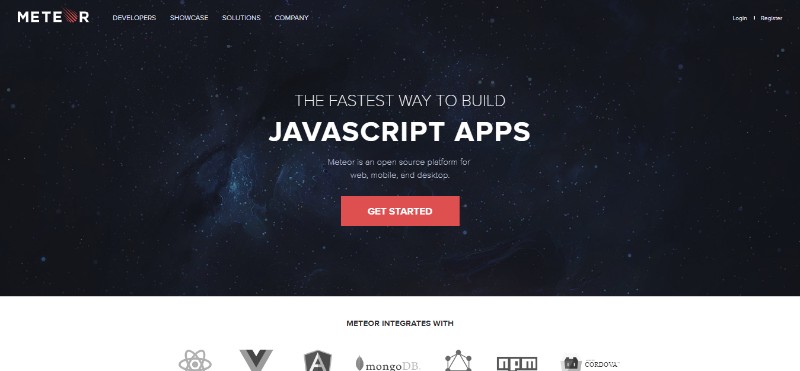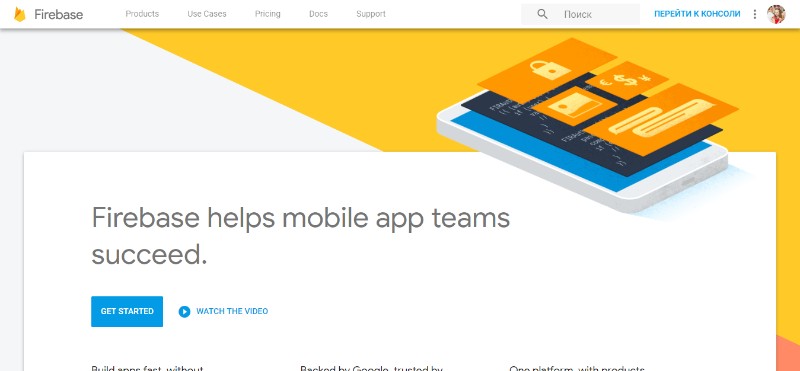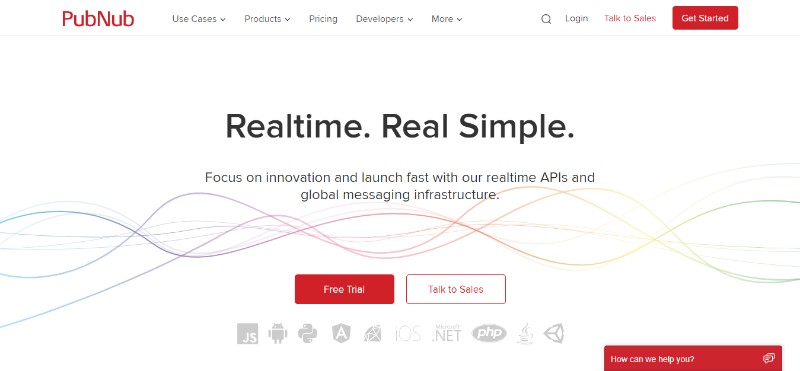Top web development trends that you should keep up with

Trends are made to change; the same rule applies to the development trends as well. The constantly changing technologies bring change to the web development technologies and web development trends.
Is it important to keep up? Absolutely! You should try to stay up to date with the web development news and think about the future of web design. So let’s take a better look at the latest web technology.
Progressive Web Apps (PWAs)

One of the new development trends is the creation of progressive web apps (PWAs). Thanks to the new web technologies, now we have web apps that load just like any other regular pages, but they come with some additional functionalities.
For example, they can come with device hardware access usually available only to native mobile applications, push notifications, working offline etc.
Back in 2005, website development technology has shifted from static to dynamic documents, tools, and responsive web design. Ten years later, in 2015, the term progressive web app was coined to describe these new applications that take advantage of the latest website technologies.
So what does it take for an app to be considered progressive? Let’s take a look at some of the basic characteristics.
Basic Characteristics of PWAs
To be considered a Progressive Web App, the application has to be:
- Progressive – built with progressive enhancements using the latest web tech to make the app functional regardless of the browser choice
- Responsive – viewable on every type of screen and device; it has to fit any form factor
- Connectivity independent – it has to work on low-quality networks or even offline thank the service workers enhancements
- App-like – it has to look like a traditional app; the app-shell mode with the standard navigation and interactions
- Up to date – it has to stay fresh thanks to the service worker update process
- Safe – tampering with the content cannot happen; the app has to be served via secured HTTPS
- Discoverable – engines can easily find them since they are identifiable as “applications” due to the W3C manifests and service worker registration scope
- Re-engageable – re-engagement via push notifications and similar features
- Installable – avoid the hassle of an app store and allow users to keep the most useful applications on the home screen
- Linkable – avoid complex installation and easily share via URL
Single-Page Applications (SPA)
Back in the days, one of the coolest website development news was the introduction of the SPA. It is an app that doesn’t need the page to reload when in use; instead, it dynamically rewrites the current page.
The content is loaded through JavaScript so no extra waiting time is required for reloading. Some of the best web apps 2017 have been using this new web tech, for example, Gmail, Facebook, Google Maps etc.
It is all possible thanks to the latest web technologies such as advanced JavaScript frameworks. Some of the most popular ones are Angular.js, Ember.js, Meteor.js, and Aurelia.
How an SPA works: Facebook Example
You might have noticed that a Facebook page reloads very rarely; almost never. If you, for example, click on a photo, your browser will get sent to a new URL – but the page will not refresh. Then, when you close the image, you will return to the original URL – again, with no loading necessary.
Web Components
Web components are something like widgets for your website that allow you to create reusable custom user interface components. Their functionalities are stored away from the rest of your code which means that none of the code can face any conflict because the component’s DOM is stored away from the parent’s.
Another great thing about this newest web technology is the fact that it can seamlessly integrate with the former frameworks without changing their functioning
Static Site Generators
Static site generators are the newest web technologies that take source files and generate an entirely static website. They use CMS-like concepts (such as templates) to create a static HTML-only site.
The biggest pro of this new web technology is the fact that it is pretty simple. Static generators don’t use a database or processing power. As a result, they are very fast and highly secure. They also use less of the server’s resources.
Here are a few examples:
There are lots more besides these.
CSS grid
CSS grid has been around for quite some time but it is becoming more and more popular every day. Is this the future of web development? Well, that yet remains to be seen.
However, we must point out that the CSS Grid Layout is currently the most powerful layout system. It has both columns and rows so there is no need for you to hack your way to center things vertically. Dealing with responsive design gets much easier this way.
Starting with January 2018, all major browsers started to ship unprefixed support for CSS Grid — Chrome (PC & Android), Firefox, Safari (PC, Mac & iOS), Edge and Opera. Internet Explorer 10 and 11 on the other hand support it, but it’s an old implementation with an outdated syntax.
GDPR — General Data Protection Regulation
2018 brought some big development news when the GDPR was enforced in May. Basically, this regulation fundamentally reshaped the way data is handled across every sector.
Although this regulation was enforced by the European Union, it applies not only to the site owners living in the EU but to everybody who collects data from the EU citizens. Basically, it applies to the entire world.
So not only is this one of the current development trends, but it is actually a legal requirement that all websites and apps are GDPR-compliant. If you aren’t familiar with the regulation and all the changes it brought, you can get more detailed information here.
Customer Support Automation
Customer support has improved significantly over the years. What started as simple help docs turned into automated customer support systems made to solve all the major issues and most common problems the customers might experience.
We are expecting things to get even more advanced in the future. Web dev technologies point out to the possibility that the next generation of human-like AI service agents will be at our disposal 24/7 – and we will not be able to notice the difference between the conversation with an AI service agent and a human.
JavaScript Improvements
For quite some time now, JavaScript has been people’s favorite programming language for app development. All points out to the fact that this programming language will continue to trend in 2018 thanks to the constant development of new website technologies.
We now have JS technologies focused on a Mobile-first approach which is crucial for modern web development; JavaScript’s Angular 2 and Angular 4.
Angular 2 suggests the use of TypeScript which is the most productive way to develop both medium and large web apps that are compatible with any mobile platform/ web browser. Angular 4 is faster and saves space by reducing the generated code size by approximately 60%.
Motion UI
If you don’t want to compromise the simplicity yet you want your website to stand out from all other websites out there, you should get familiar with the use of Motion UI.
It is one of the latest web development technologies that make it possible (and very easy) for you to add all kinds of animations to your website. From adding background animation to animated charts and similar, this is definitely one of the development trends you should consider for your next website redesign.
Single Page Websites
When talking about web development trends, we have to mention single page websites. The thing that makes them stand out is the sheer simplicity.
All you have here is the content organized into one scrollable page; no clutter, no complex navigation, no multiple tabs etc. If you want to deliver the information in the simplest way possible without having to jump over random pages, this is one of the development trends you need to learn more about.
Static Websites
Who would have thought that static websites would be trending again? Well, they are. In fact, it is one of the latest trends in web design. However, they have become more advanced with the new static site generators.
The biggest pros are the security, cheap development, and quick loading time.
VR and AR
If someone told you 10 years ago that you will be able to shop for clothes in the virtual store from the comfort of your own sofa, you probably wouldn’t have believed them. Yet, here we are.
Virtually Reality market was officially launched a couple of years ago and it has been evolving ever since. VR and AR are now influencing the web design development trends and the technologies necessary to experience this new form of “reality” are becoming more and more accessible to an average user.
Let’s just quickly get over some of the basic facts for those who aren’t entirely familiar with VR and AR and the difference between the two.
To put it simply, Virtual Reality (VR) creates independent digital worlds. Augmented Reality (AR), on the other hand, adds digital content to our reality. The biggest advantage of both of these technologies is the emotional engagement they trigger with the user.
Some businesses have already decided to take advantage of these emerging web technologies and all points out to the fact that this might be the future of web development.
Alibaba, for example, already launched a VR store for the buyers where they can see and manipulate 3D replicas of the products they want to purchase. Of course, the customers are more than interested to experience this kind of shopping.
So what do you think? Could this be the future of web design?
The Popularity of Real-time Web Apps

Although real-time web apps are old news now, they have become one of the current development trends again. Since we live in an era of rapid interaction, the possibility to share information instantly is a huge plus today.
The way these apps operate is by leaving the connection between the server and the client open. As a result of that, the server can simply push the new data once it appears. If you are looking for the best web framework 2018 that incorporates these website design technologies, check out Node.js. and Ruby on Rails.
You might not even be aware of how often you actually see the real-time functionality in your favorite apps. For example, the user’s activity streams on Facebook and Twitter exist due to this new development in technology.
However, you can also see real-time data in numerous other features, for example, multi-player games, collaboration, activity streams, chat, dashboards, second-screen experiences, and many more.
Not only does this latest trend in web design increase user engagement, but it also reduces the server load.
Let’s take a look at several startups that have started incorporating this technology into their designs to democratize it for the users:
MeteorJS

If you want to build an app that combines the client-side templates with real-time data, MeteorJS is the right open-source platform for you.
It was designed for JavaScript developers and it makes it possible for them to write the code that will run on both the server and the client.
Let’s take a look at some of the key features this useful platform comes with:
- Ship more in less code – Thanks to the integrated JavaScript stack that extends from the database to the end user’s screen, you can now accomplish in 10 lines what would otherwise take 1000
- Build apps for any device – Whether you are developing for the web, desktop, iOS, or Android, you can use the same code.
- Integrate technologies you have been using so far – Use frameworks and tools of your choice
Firebase

Firebase is Google’s mobile platform for developing apps quickly and easily. It comes with similar features as MeteorJS. However, the dashboard for viewing data and user authentication configuration sets it apart.
It comes with new web development technologies that are great for mobile app development. Firebase supports client-side libraries and works great with iOS, JavaScript, and Android.
Another detail that sets it apart from the competition is the fact that it successfully combines data persistence with real-time data delivery.
PubNub

PubNub has one main focus: the delivery of real-time data. And yes, it does it quite successfully.
Application programming interface with PubNub is easy to use and it makes it really easy for the developers to send and receive real-time data. In addition to that, it supports over 50 SDKs, including iOS, Java, Ruby, PHP, .NET, and JavaScript.
However, keep in mind that the focus on real-time data also means no authentication and no data storage.
Ending thoughts on these web development trends
Just like any industry, the web development industry comes with the constantly-changing development trends. For that reason, every professional developer should stay up to date with the latest website development technologies.
From the latest trends in web designing to the latest website trends, the future of websites is hard to predict but what we can say for sure is that the technologies are constantly evolving. If you want to be able to create high-quality websites and apps, you need to evolve with them.
If you enjoyed reading this article on web development trends, you should check out this one about web application development.
We also wrote about a few related subjects like web technologies and web application testing.
